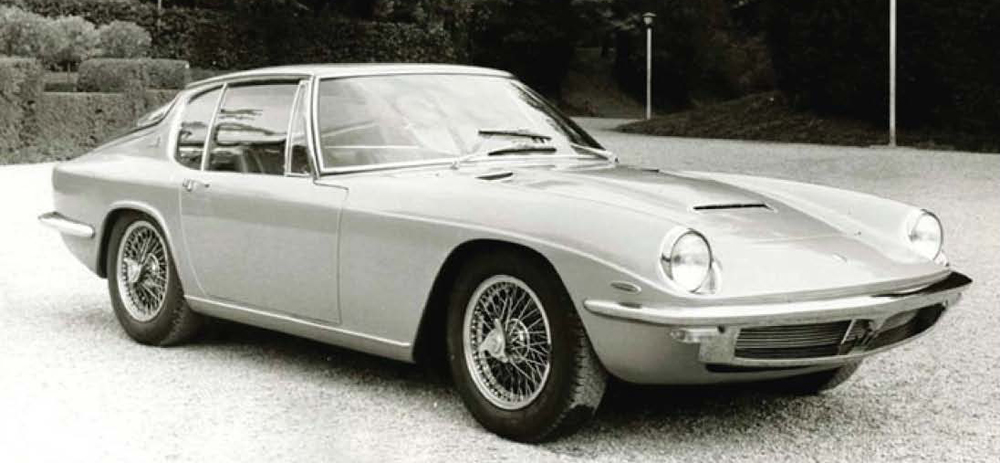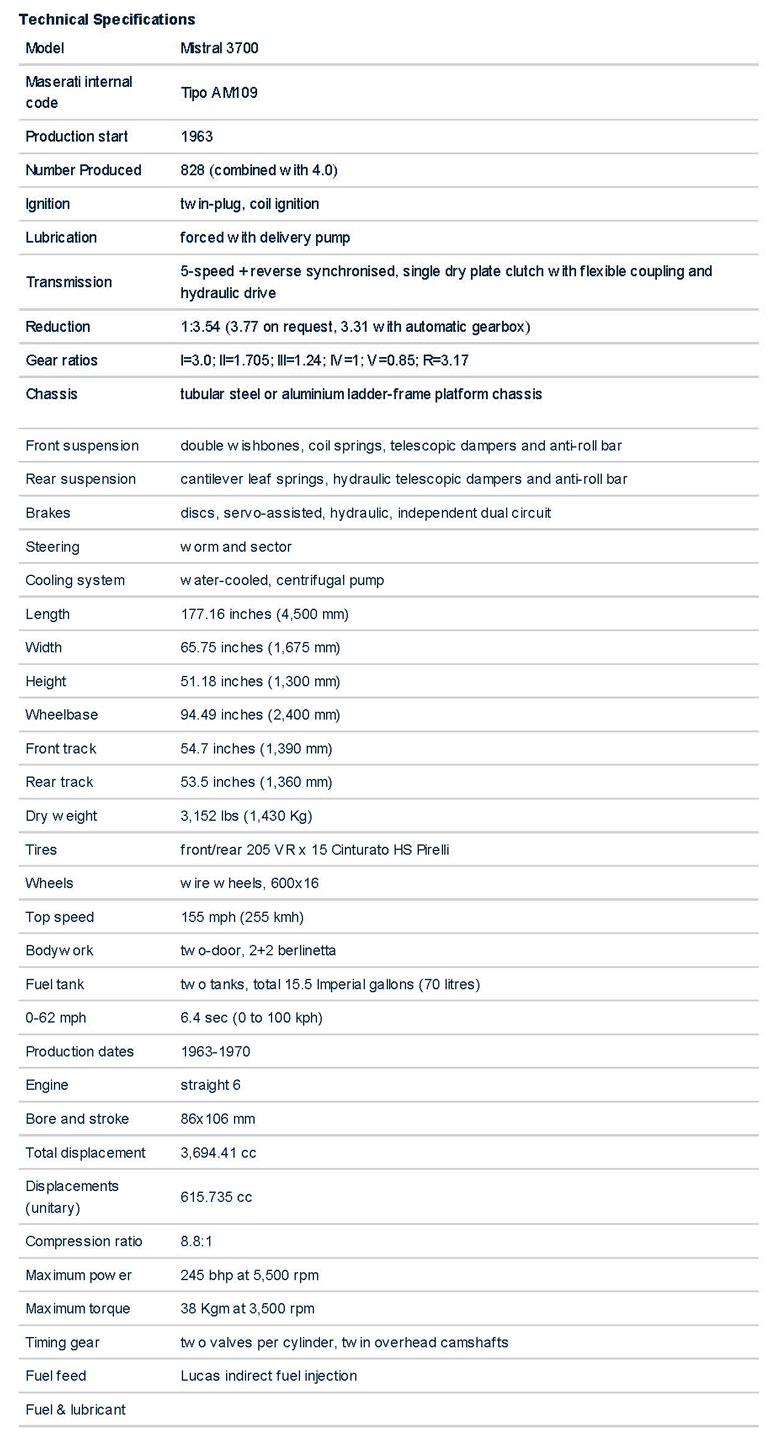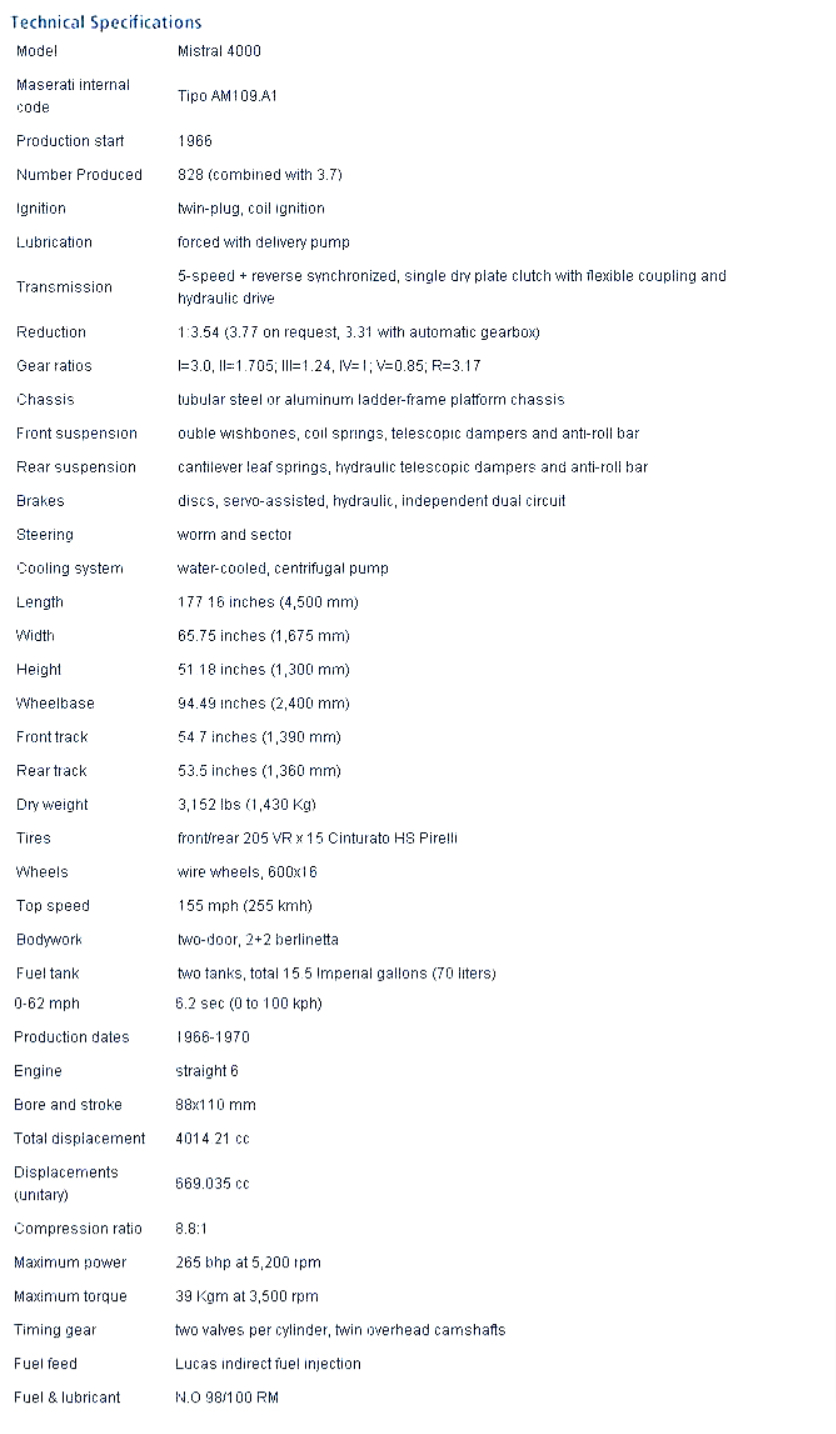
Maserati Mistral 3.7 (1963 to 1970)
The Maserati Mistral was originally launched as a 2-seater coupé in November 1963 at the Turin motor show, alongside the very first Quattroporte. Simply labeled “2 Posti” (or even “Berlina 2 Posti” as Road & Track still stated in 1964), it took the Mistral name following the suggestion of the French Maserati importer Colonel John Simone. Mistral is the name of a French wind blowing from the Mediterranean coast, and from this point onwards Maserati two-seater sports cars would be named after winds. 2+2 coupés would take the names of race tracks; the Sebring started this trend earlier that year.
The 1964 Maserati range was the most comprehensive yet, with the Mistral and Quattroporte joining the Sebring, 3500 GT and 3500 GT Spyder. The Mistral’s styling was an enormous success courtesy of Pietro Frua of Turin. The car was exceptionally innovative, with its air intake mounted underneath the front bumper, thus abandoning the traditional grille. Its high tail featured another interesting first: the tailgate. Large windows made the cabin very airy. Bodies were manufactured by Maggiora in Turin and finished at Officine Padane in Modena. The majority of Mistrals were constructed in alloy, but from 1967 they were replaced with steel construction, with just the hood and doors remaining in alloy. The chassis – made of square-section tubes – was new, with a wheelbase of just 2.4 meters, 10 cm shorter than the Sebring and the Vignale Spyder.
The engine was increased to 3.7 liters, the same unit that would later be fitted to the Sebring, while the Mistral Spyder would initially be fitted with the 3.5 version, deemed sufficient for drop-top motoring. According to the original brochure, “twin ignition and indirect fuel injection offered exceptional power, smoothness and economy”. All Mistrals were fitted with disc brakes, while air conditioning, the 3-speed automatic transmission and a radio were optional.
On an interesting side note, many young American car enthusiasts got their first taste of Maserati ownership – on a very small scale – in 1969 when toy company Hot Wheels introduced a Mistral in their second series of toy cars (Hot Wheels began with their first series just the year before in 1968).
Maserati Mistral 4.0 (1966 to 1970)
In 1966 a new 4 liter engine was offered on both the Sebring 2+2 and the Mistral Coupé, developing 265 hp. Introduced at the Geneva motor show, it was to be the last evolution of the straight-6 engine family, which could trace its roots back to the 3500 GT and the A6 series before that, and even the pre-war 6CM Grand Prix car. Top speed reached 255 kph (158 mph), no doubt aided by the car’s light weight and aerodynamic body.
Side vents with a chrome surround adorned the car’s front wings. Towards the end of the production run alloy wheels, identical to those on the Ghibli, were available to order. One of the 828 coupés produced during the total production run was delivered to Sir Peter Ustinov, an English actor, writer and dramatist.
Specifications and Features



You must be logged in to post a comment.